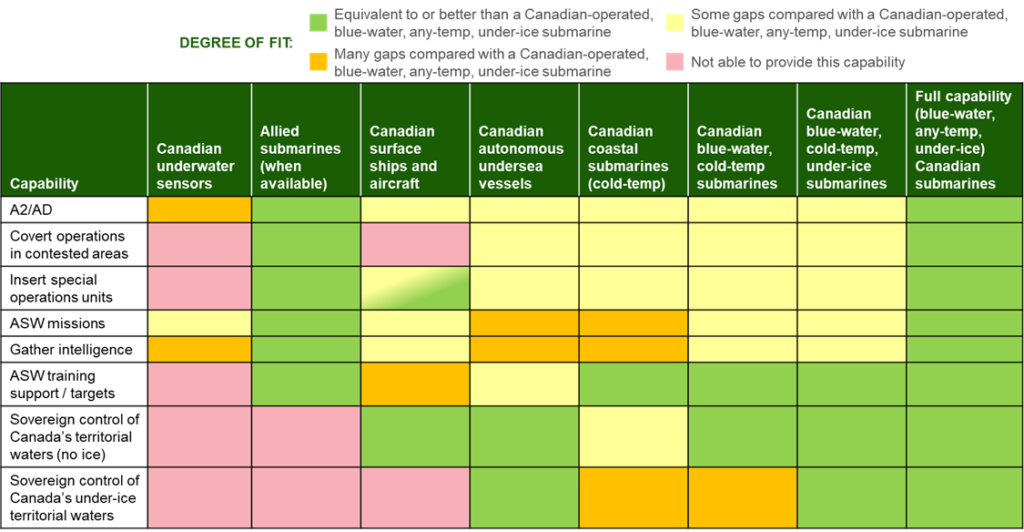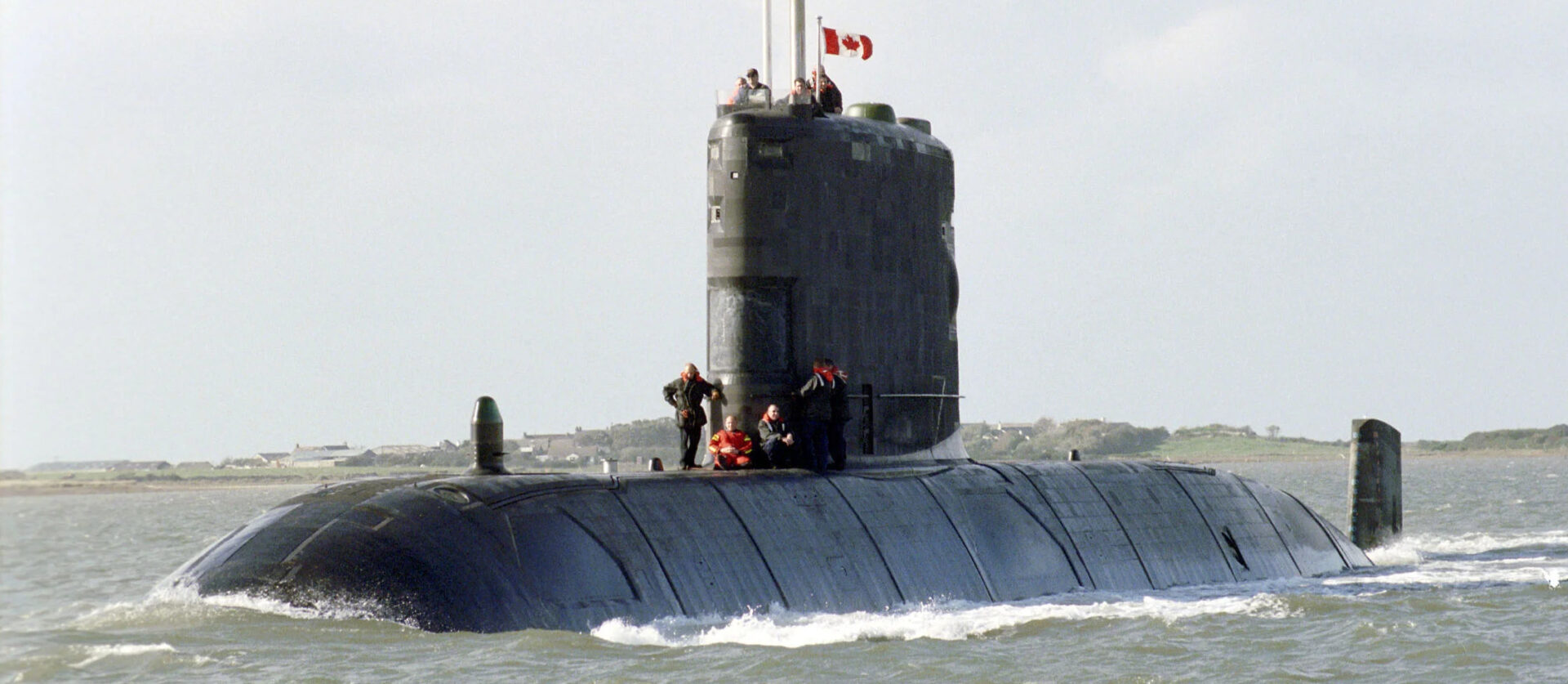ARE SUBMARINES REQUIRED TO MEET CANADA’S UNDERSEA WARFARE NEEDS?
By Michael W. Jones, Jim Hughes, John Holmander, and Andrew Miller
May 16, 2022
As the Canadian Patrol Submarine Project considers the undersea warfare capabilities that Canada needs in the future, it is likely considering whether those capabilities require a submarine – could these capabilities be achieved in some other manner, either based on current or future technologies? This paper, the third in a series (see 6 Questions to Consider When Planning for Canada’s Next Submarine, March 2022, and Canada’s Undersea Warfare Capabilities and the Victoria-Class Replacement, April 2022), provides a perspective on the importance of replacing submarines with submarines.
Alternatives to a robust replacement of the Victoria class (blue-water, any-temperature submarine with under-ice capability)
A full-capability Victoria-class replacement would be able to operate in any ocean or sea (blue-water), any temperature, and under-ice. Potential alternatives to a full-capability replacement of the Victoria class run the gamut from a network of underwater sensors to blue-water, cold-temperature, under-ice submarines. A representative – but not exhaustive – list could be:
- Canadian underwater sensors that are fixed in place to detect surface and undersea vessels
- Submarines operated by Canada’s allies (e.g., U.K., U.S.), which may provide many of Canada’s required capabilities but may not always be available when Canada requires support
- Canadian surface ships and aircraft that can detect, monitor, and, as appropriate, deter maritime activity
- Canadian autonomous undersea vessels that can detect and monitor maritime activity and, over time, could expand capabilities to include deterrence
- Canadian coastal submarines (cold temperature) that can provide for continental defense but are not able to travel large distances and possibly cannot go under ice
- Canadian blue-water, cold temperature submarines that have long ranges but are unable to operate under ice or in warm waters
- Canadian blue-water, cold temperature, under-ice submarines that have long ranges and can operate under ice, but not in warm waters
Each potential alternative has its own implication for which of Canada’s possibly needed undersea warfare capabilities can be met.
Canada’s possible needs for undersea warfare capabilities
The best solution to replace the Victoria class is grounded in the undersea warfare capabilities that Canada needs. An earlier brief (Canada’s Undersea Warfare Capabilities and the Victoria-Class Replacement, April 2022) suggested that Canada may possibly have an enduring need to:
- Deny access to adversary vessels (anti-access / area denial (A2/AD))
- Operate covertly in contested environments (domestic, international, or foreign waters)
- Insert special operations units
- Perform anti-submarine warfare (ASW) missions
- Gather intelligence
- Provide ASW training to other vessels (Canadian and allied)
- Exercise sovereign control over all of Canada’s territorial waters – including those under ice
A blue-water, any-temperature, under-ice submarine could provide all these capabilities; potential alternatives should be assessed against which of these capabilities they can – and cannot – provide.
Potential alternatives to a Canadian Blue-water, any-temperature, under-ice submarine could create capability gaps that Canada might find unacceptable
To understand the potential attractiveness of alternatives to a blue-water, under-ice submarine, we assessed the extent to which each could possibly provide the capabilities that Canada might need (Figure 1). Each alternative has potential capability gaps that Canada might find unacceptable, to the extent that they compromise Canada’s strategic national security objectives, and there does not appear to be a low-cost combination of alternatives that avoids capability gaps. Additionally, the alternative with the fewest gaps – submarines operated by Canada’s allies – is subject to the operational needs of its own navies and thus may not always be available to meet Canada’s needs.

Figure 1. Potential fit of alternatives to a Canadian-operated, blue-water, under-ice submarine with capabilities that Canada might need.
Undersea warfare capabilities are not the only consideration – but they should be considered first
In developing initial requirements, Canada may wish to consider elements that are beyond undersea warfare capabilities – such as affordability, expected useful life, and maintenance requirements. These are all important factors to consider in selecting a platform, which can involve trading-off capability, cost, and schedule considerations, among others. Starting that trade-off process by considering undersea warfare capabilities – the capabilities that Canada is trying to maintain as the Victoria class retires – could help keep the decision grounded in which capabilities Canada would like to maintain, and which capabilities it is comfortable relinquishing.
Conclusion
Blue-water, any-temperature, under-ice submarines deliver a set of capabilities that cannot be easily and reliably matched by alternatives, or even combinations of alternatives. As policymakers consider how to best replace the Victoria class, staying grounded in the capabilities that Canada requires – and how potential alternatives might meet those capabilities – could help ensure Canada’s investment meets the test of time, especially in the face of the budgetary, schedule, or geopolitical pressures that will manifest throughout the acquisition process.
Photo credit: Alan Rowlands, Canadian Forces Maritime Command

